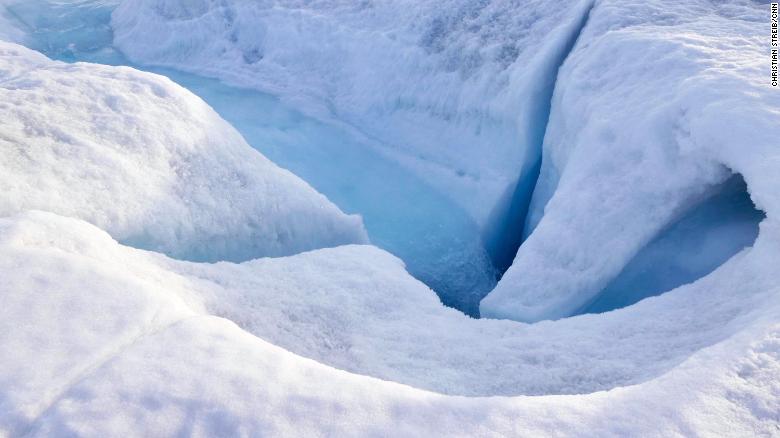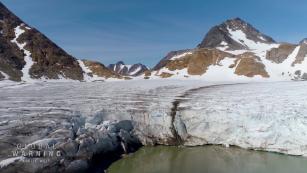Greenland's massive ice sheets contain enough water to raise global sea levels by 23 feet, and a new study shows that they are melting at a rate "unprecedented" over centuries -- and likely thousands of years.
The study, published Thursday in the scientific journal Nature,
found that Greenland's ice loss accelerated rapidly in the past two
decades after remaining relatively stable since the dawn of the
Industrial Revolution in the mid-1800s.
Today,
Greenland's ice sheets are melting at a rate 50% higher than
pre-industrial levels and 33% above 20th-century levels, the scientists
found.
"What
we were able to show is that the melting that Greenland is experiencing
today is really unprecedented and off the charts in the longer-term
context," said Sarah Das, an associate scientist at the Woods Hole
Oceanographic Institution and a co-author of the study.
To
determine just how fast Greenland's ice is retreating compared with the
past, scientists used a drill the size of a traffic light pole to take
ice core samples.
The samples were
taken from sites more than 6,000 feet above sea level, giving the
researchers a window into melting on the ice sheet over the past several
centuries.
In the wake of October's dire report
from the UN Intergovernmental Panel on Climate Change warning that
civilization has just more than a decade to stave off climate
catastrophe, Thursday's report spells more bad news for the planet,
especially the millions of people living near the world's oceans.
Melting
from Greenland's ice sheet is the largest single driver of global sea
level rise, which scientists predict could swamp coastal cities and
settlements in the coming decades.
Eight of the 10 largest cities in the world are near coasts, and 40% to 50% of the global population lives in coastal areas vulnerable to rising seas.
The
study also found that Greenland's ice loss is driven primarily by
warmer summer air and that even small rises in temperature can trigger
exponential increases in the ice's melt rate.
"As
the atmosphere continues to warm, melting will outpace that warming and
continue to accelerate," said Luke Trusel, an assistant professor at
Rowan University and study co-author.
According
to Trusel, the current thought in the scientific community is that
there is a temperature threshold that could trigger a point of no return
for the eventual melting of Greenland and Antarctica's ice sheets. And
though we don't know exactly what that temperature tipping point is,
"what's clear is that the more we warm, the more ice melts."
"Once
the ice sheets reach these tipping points, it's thought that they'll go
into a state of irreversible retreat, so they'll be responding to what
we do now for centuries and milliennia into the future," Trusel said.
Das
stressed that although climate science often focuses on the future
impacts of warming, the findings show that the climate is already
undergoing hugely significant changes.
"Climate
change -- whether it's in Greenland or in your backyard -- is already
here and already happening and already impacting people. It's not
something that's coming in the future, and this study really drives home
that point," she said.









